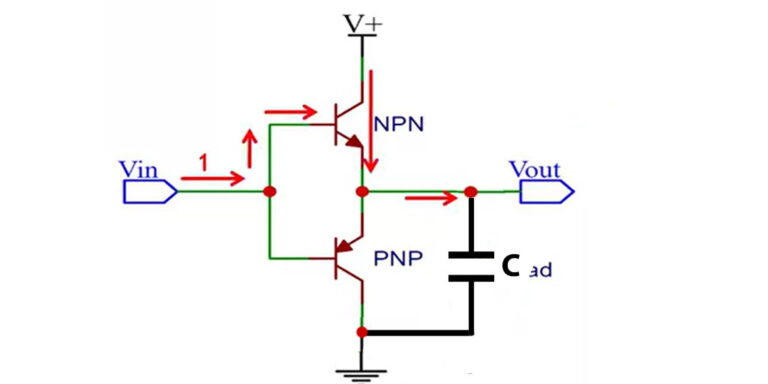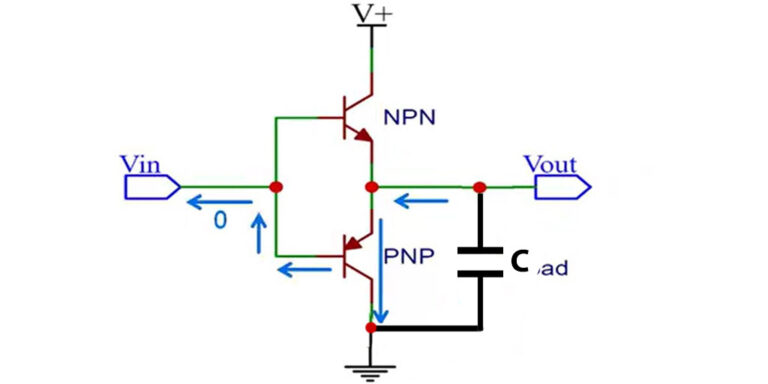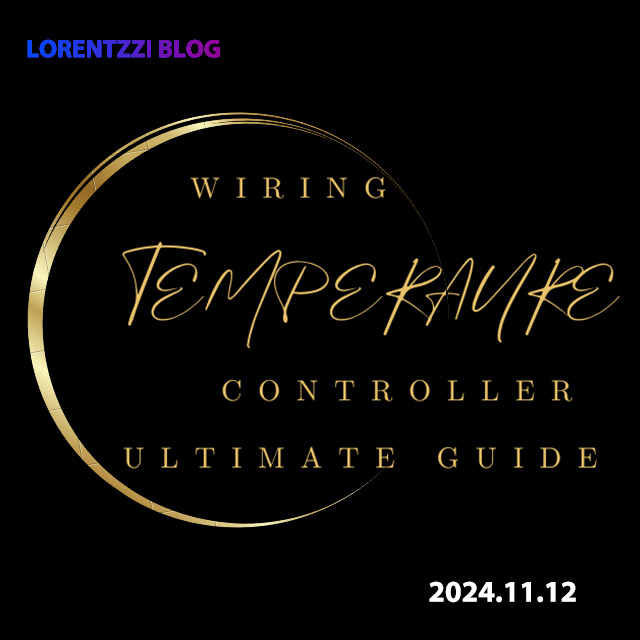A saída push-pull (também chamada de saída Totem pole) é um circuito comum encontrado em equipamentos eletrônicos, como codificadores rotativos instrumentaisMCU e assim por diante. Ele pode controlar efetivamente o fluxo de corrente e fornecer dois estados de saída estáveis de nível alto e nível baixo. Neste artigo, apresentaremos o que é a saída push-pull e suas características.
O que é saída push-pull?
Uma saída push-pull é um circuito que permite selecionar a corrente de dissipação ou de fonte de uma carga conectada, geralmente composta por um transistor NPN e um transistor PNP (ou dois MOSFETs complementares). Veja seu diagrama de circuito abaixo:

Quando o sinal de entrada for de nível alto (geralmente chamado de "1"), o transistor NPN será ligado e o transistor PNP será desligado. Assim, ele gerará um nível alto (1). Isso é chamado simplesmente de "Empurrar", consulte o diagrama de fluxo de corrente elétrica abaixo:

Quando o sinal de entrada for de nível baixo (0), o transistor NPN estará aberto e o transistor PNP estará fechado. Portanto, ele gerará um nível baixo (0). Isso é chamado simplesmente de "Puxar", veja o fluxo de corrente na figura abaixo:

Essa estrutura permite que a saída push-pull forneça saída de alto nível e saída de baixo nível.

Características da saída push-pull
- Alta capacidade de corrente de saída: Como todos sabemos, em um codificador rotativo incremental, se não houver outros circuitos externos, sua corrente de saída será muito pequena. Ao usar os circuitos push-pull, a corrente de saída pode chegar a 30 mA, de modo que pode ser usada para acionar várias cargas, como motores, relés e válvulas solenoides.
- Baixo consumo de energia: A saída push-pull requer apenas uma pequena corrente operacional no estado estático, o que ajuda a economizar energia e a reduzir o consumo de energia.
- Conexão direta com a alimentação e o aterramento: A saída push-pull pode ser conectada diretamente à alimentação e ao terra sem resistores pull-up ou pull-down externos, simplificando o projeto do circuito.
- Tensão de saída estável: A saída push-pull garante uma tensão de saída estável de alto e baixo nível, o que é fundamental para a amplificação e a transmissão confiáveis do sinal. Como a tensão de saída é fornecida por uma fonte externa, ela não será afetada pela interferência interna e, portanto, a tensão de saída é mais estável.
- Controle bidirecional: Conforme mencionado anteriormente, a saída push-pull pode lidar não apenas com sinais de entrada de baixo nível, mas também com sinais de alto nível, portanto, pode lidar melhor com sinais bidirecionais.
- Capacidade anti-interferência aprimorada: A saída push-pull ajuda a aumentar a capacidade anti-interferência. Mesmo que a interferência externa afete o nível alto ou baixo da entrada, desde que a entrada esteja dentro da faixa de nível alto e baixo, o terminal de saída não mudará de acordo.
Conclusão
Em conclusão, a saída push-pull é um modo de saída de circuito comumente usado que combina transistores NPN e PNP (ou MOSFET) para fornecer saídas estáveis de alto e baixo nível. Ela oferece alta capacidade de corrente de saída, baixo consumo de energia e a capacidade de se conectar diretamente à fonte de alimentação e ao terra sem resistores externos. A tensão de saída estável da saída push-pull garante a amplificação e a transmissão confiáveis do sinal. Com suas características versáteis, a saída push-pull é amplamente aplicada em circuitos digitais, microcontroladores e outros equipamentos eletrônicos, permitindo um controle eficiente do sinal e acionando várias cargas.






